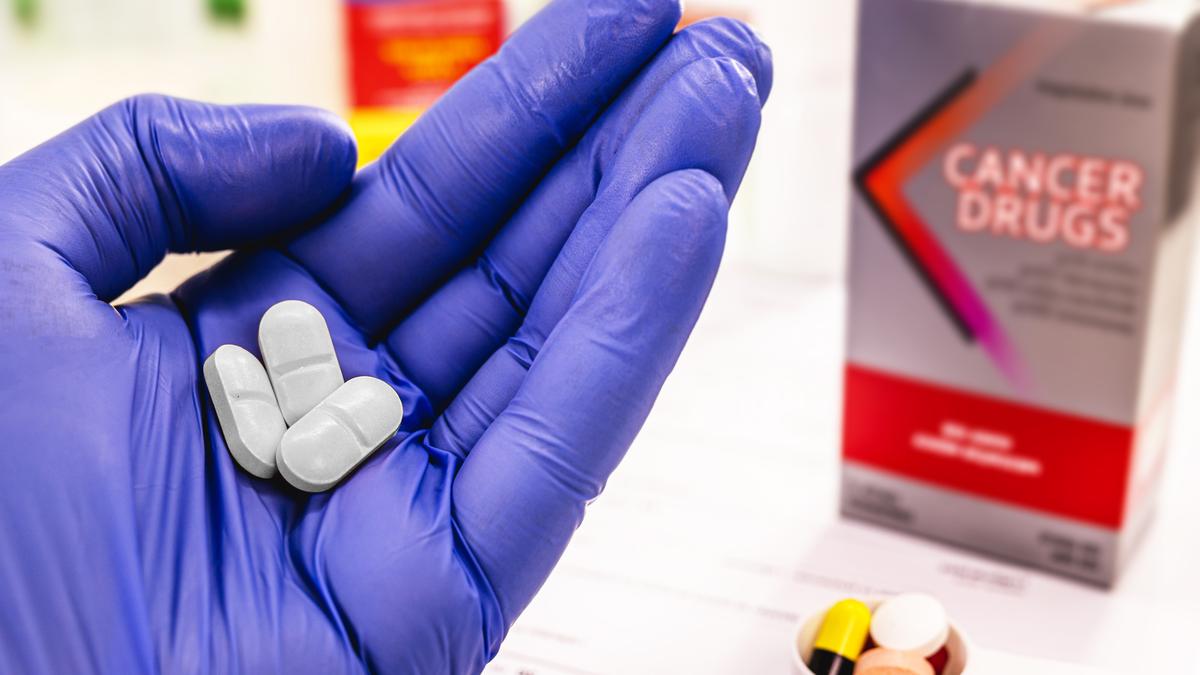The story so far:
A major new investigation by the Bureau of Investigative Journalism published by The Hindu has revealed that cancer drugs shipped around the world to more than 100 countries have failed quality tests. But what are these drugs and how are they used?
Cancer is a disease characterised by uncontrolled cell growth. It is caused by mutations in genes disrupting or inhibiting the normal ways in which cells divide or die. This causes cancerous cells to develop – and when a mass of cancerous cells grows, it can form a tumour.
Chemotherapy drugs disrupt this process, and these medicines have transformed the landscape of cancer treatment, improving outcomes for millions of patients. The six types of drug in our investigation – cisplatin, oxaliplatin, cyclophosphamide, doxorubicin, methotrexate and leucovorin – are all chemotherapy treatments.
While there are differences in exactly how these drugs work, most share a common goal: to target and kill cancer cells while minimising harm to normal cells.
What is cisplatin?
Cisplatin is a platinum-based drug that emerged in the 1960s from an unexpected discovery. Researchers found that a platinum-containing compound blocked the growth of bacteria, leading to the realisation that it could potentially be used to combat cancer.
Cisplatin works by binding to the DNA of cancer cells, preventing them from growing and dividing. The drug is particularly effective against testicular, ovarian, bladder and certain lung cancers. Its introduction has significantly improved survival rates for many patients, whether used alone or in combination with other therapies.
However, like all potent medications, cisplatin comes with side effects, including sickness, kidney damage and hearing issues. Cisplatin also suppresses the function of the bone marrow, where new blood cells are produced. The resulting reduction in white blood cells has severe effects on patients’ immune systems, leaving them vulnerable to infection.
What is oxaliplatin?
Oxaliplatin, like cisplatin, is a platinum-based drug. It also works by binding to and damaging the DNA of cancer cells. It is used mainly to treat the more advanced stages of colorectal cancer and following surgery for the removal of colon cancer, to wipe out remaining malignant cells.
Oxaliplatin comes with broadly similar side effects to cisplatin.
What is cyclophosphamide?
Cyclophosphamide is another key chemotherapy drug, often used to tackle disease including breast cancer, some types of leukemia (a type of blood cancer), sarcoma (cancer of the connective tissues) and advanced lymphoma (cancer of the lymph nodes).
Cyclophosphamide disrupts the DNA of cancer cells. This limits their ability to replicate and mutate.
It also causes a drop in white blood cells and can also cause pain when passing urine due to inflammation of the bladder.
What is doxorubicin?
Often referred to as the “red devil” due to its striking colour and severe side effects, doxorubicin was derived from a type of soil bacteria called Streptomyces, and was initially explored as an antibiotic.
Doxorubicin is effective against several types of cancer, including breast cancer, leukaemia, lymphoma and sarcoma. It works by interfering with the cancer cell’s DNA and disrupting the replication process. It is a staple in chemotherapy protocols, despite potential side effects including heart damage, risk of infection, skin changes and hair loss.
What is methotrexate?
Methotrexate is very effective against various cancers, including leukaemia, lymphoma and certain types of tumour. By inhibiting the protein responsible for creating new DNA molecules, it effectively stifles cancer cell growth.
Methotrexate is often given in high doses, followed byleucovorin to help protect healthy cells from damage.
What is leucovorin?
Leucovorin, also known as folinic acid (not to be confused with folic acid), is a form of vitamin B9. It differs from the rest of the drugs that were tested in the Bureau’s investigation in that it is not technically considered a chemotherapy drug, but a companion to chemotherapy.
It was first introduced in the 1950s and was designed to manage the side effects of methotrexate, for which it is still used today.
Meriem Mahdi is with The Bureau of Investigative Journalism.
Published – June 27, 2025 08:30 am IST
